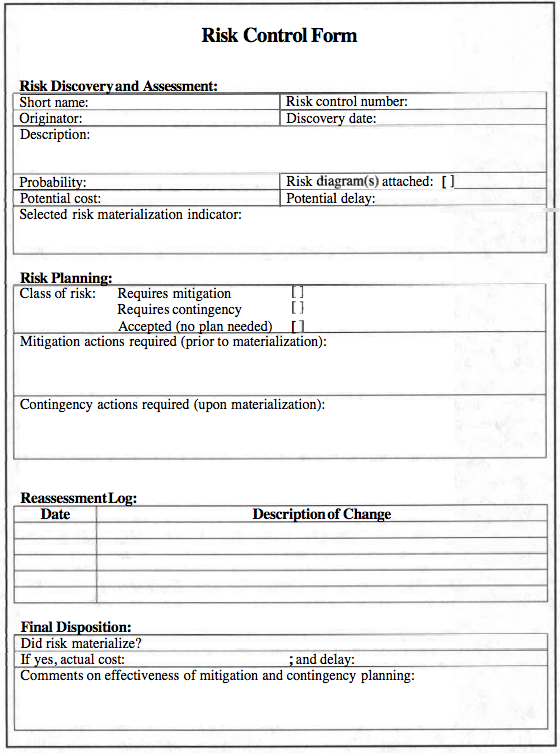 Waltzing with Bears by Tom Demarco and Timothy Lister
Waltzing with Bears by Tom Demarco and Timothy Lister
 Waltzing with Bears by Tom Demarco and Timothy Lister
Waltzing with Bears by Tom Demarco and Timothy Lister
Demarco and Lister need: a) error bars for their probability estimates, b) post-mortems for projects, and c) to organize projects by similar actions. The more similar actions, the more we can see where we were over- or under-confident about our probability estimates.
Most software project managers do a reasonable job of predicting the tasks that have to be done and a poor job of predicting the tasks that might have to be done.
They provide a risk-discovery worksheet at the end of the book; it's a good start.

Q7: Wasn't lateness of the ABHS software seen as a potential risk? Only after it happened. Before that, the software was placed on an aggressive schedule and managed for success. Q8: Haven't software projects been late before? Yes, but this one was supposed to be different. Q9: Was there any history of prior projects building similar systems? Yes. The Franz Josef Strauss Airport in Munich had installed a pilot ABHS, designed along the lines of the DIA version. QlO: Did the DIA team visit the Munich project, and if so, what did it learn? Members of DIA's ABHS project did visit Munich. The Munich software team had allowed a full two years for testing and six months of 24-hour operation to tune the system before cut-over. They told the DIA folk to allow that much or more. Q l l : Did DZA management follow this advice? Since there wasn't time for such extensive testing and tuning, they elected not to.